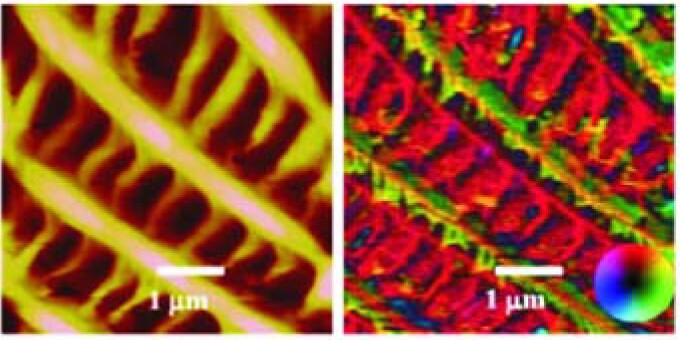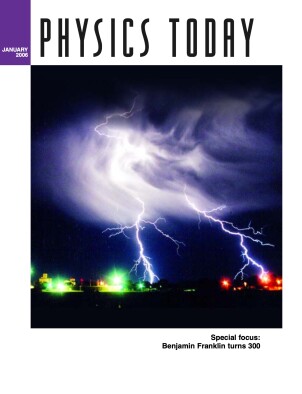Ananoscale Galvani experiment
DOI: 10.1063/1.2180147
A nanoscale Galvani experiment provides a new way to image and characterize biological tissue. In the 18th century, Italian physician and physicist Luigi Galvani caused a frog’s muscle to contract when he touched it with an electrically charged metal scalpel, and thereby made perhaps the first observation of electromechanical coupling in biological systems. The simplest of such couplings is piezoelectricity, in which voltage induces mechanical deformation and vice versa. Cellulose, collagen, and keratin are among the many biopolymers that exhibit piezoelectric behavior. At the November 2005 AVS meeting in Boston, Sergei Kalinin of Oak Ridge National Laboratory and his colleagues reported results from a technique named piezoresponse force microscopy (PFM), in which a voltage applied to the tip of a scanning probe microscope induces an electromechanical response that is determined by local molecular orientation. The researchers have imaged various tissues—including cartilage, the enamel and dentin of teeth, and deer antler—with better than 10-nm resolution. The images here show a portion of a butterfly wing; topography is on the left and the piezoresponse is on the right, where the colors indicate the orientation of chitin molecules. (S. Kalinin, B. Rodriguez, A. Gruverman, AVS meeting paper NS-WeM3. Also see (J. Shin et al., J. Vac. Sci. Technol. B 23 , 2102, 2005 http://dx.doi.org/10.1116/1.2052714


